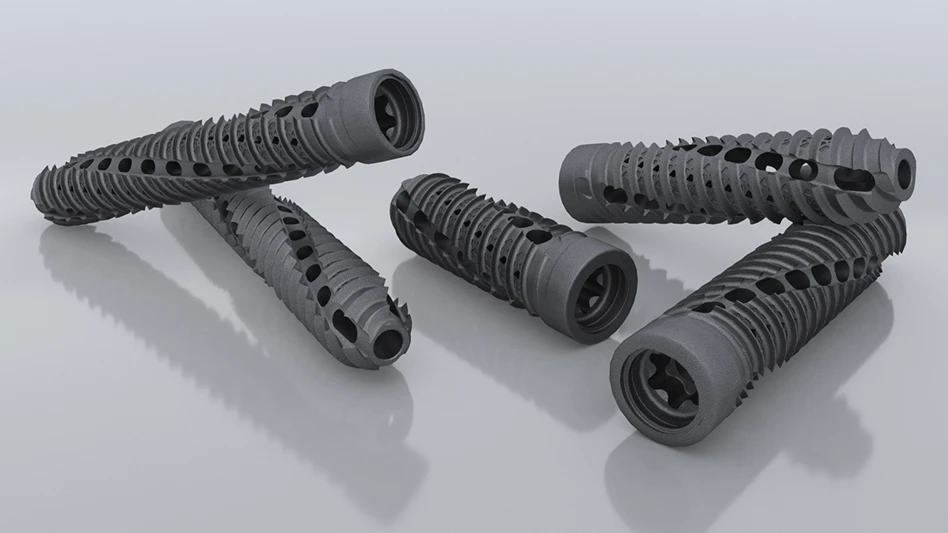
Xēnix Medical
Xēnix Medical, a surgical implant company focused on the development of novel science-based solutions for patients requiring spinal fusion surgery, has received 510(k) clearance from the U.S. Food and Drug Administration (FDA) to market the SOLACE Sacroiliac Fixation System with proprietary NANOACTIV surface technology and compatibility with StealthStation Navigation.
The SOLACE Sacroiliac Fixation System consists of 3D printed, threaded implants ranging 10.5mm or 12.0mm in diameter and 30mm to 115mm in length. Implants feature Xēnix Medical’s NANOACTIV nanotechnology surface and incorporate helical autograft harvesting flutes and porous channels for boney ingrowth running the length of the device.
The SOLACE Sacroiliac Fixation System is intended for sacroiliac fusion for sacroiliac joint dysfunction including degenerative sacroiliitis and sacroiliac joint disruptions; augmenting, immobilization, and stabilization of the sacroiliac joint in skeletally mature patients undergoing sacropelvic fixation as part of a lumbar or thoracolumbar fusion; and for fracture fixation of acute, non-acute, and non-traumatic fractures involving the sacroiliac joint.
The system is also cleared for navigation of the SOLACE implants and instrumentation utilizing the Medtronic StealthStation system and NavLock trackers to assist the surgeon in precisely locating anatomical structures in either open or minimally invasive procedures.
Todd Abel, MD, neurosurgeon at University of Tennessee Medical Center in Knoxville, Tennessee says, “I am extremely excited about the implant nano surface features and ease of use of the Solace SI System. I believe my patients will have improved fusion rates and improved patient outcomes and quality of life from the NANOACTIV surface.”
The NANOACTIV micro and nano-roughened surface is designed to improve fixation to adjacent bone and has been engineered with nano-scale surface features at a nanometer (10-9) level, which have demonstrated the ability to elicit an endogenous cellular and biochemical response as represented by differentiation of human mesenchymal stem cells through the osteogenic lineage and production of a mineralized matrix in vitro1, as compared to an untreated surface2. The NANOACTIV implant surface demonstrates elements to be considered a nanotechnology as outlined in FDA nanotechnology guidance document.
“The SOLACE Sacroiliac Fixation System is a major first step in the evolution of Xenix Medical beyond an interbody company,” states Ryan Phillips, president of Xēnix Medical, “Leveraging our expertise in additive manufacturing, this system opens the door to a new level of opportunity for the company to grow within our current and future distribution channels. The SOLACE system is the only nanotechnology sacroiliac fixation system on the market designed specifically for a lateral, oblique, or posterior sacral alar iliac technique, giving surgeons complete versatility with a best-in-class technology platform. This system will also provide independent distributors a superior option to compete with the industry leader in this space, which predominantly utilizes a direct sales force.”
1In vitro performance may not be representative of clinical performance
2Data on file
Get curated news on YOUR industry.
Enter your email to receive our newsletters.Latest from Today's Medical Developments
- CUI Crash Course from Smithers
- Revolutionary implant harnesses electricity for healing
- Discover the advantages of Oerlikon's latest Surface Two technology
- #48 Lunch + Learn Podcast with OPEN MIND Technologies
- CERATIZIT achieves SBTi validation for emissions goals
- Applied Motion Products’ MLA & MEA series linear actuators
- Arterex expands portfolio with Xponent Global acquisition
- Meet the Digimar 814 C: precision and efficiency in metrology






